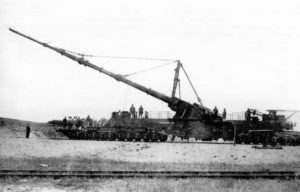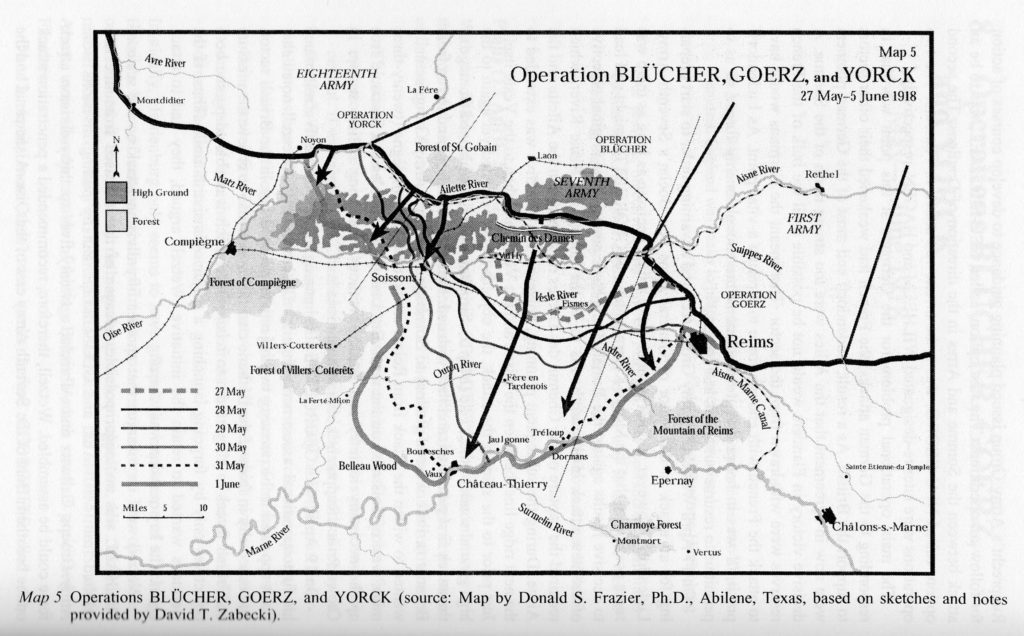We forget today just what an impact World War I had on the lives of its participants and their families. Several recent events and internet posts have reminded the Webmaster of the very precarious position of the Allied powers in Spring 1918–and just how badly they needed an American Army. (American allies might argue they needed the manpower, not an independent American Army.)
Journey’s End and the “Operation Michael” First of the German Spring Offensives
The Webmaster recently attended the New York City premier of the movie, “Journey’s End,” a remake of R.C. Sheriff’s 1928 play with the same name. (It is still in American theaters, but it had a very limited release in the U.S. Readers should look at Fandango or similar websites to search for viewing locations.)
The film focuses on the officers of a British Battalion who are unfortunate enough to be in the front line in mid-March 1918 and who know–based on intelligence–they are about to be overrun during the German “Operation Michael”–what would be the first battle of the German Spring Offensives. Spoiler alert: For readers who have not seen the play or the 1930s black and white version of the film, the unit is obliterated on 21 March, 1918.
Faced with an increasingly war-weary Vaterland, yet buoyed by the ending of the war on the Eastern Front, General Ludendorff knew that Spring 1918 offered his best chance of ending the war before American troops could reach Europe in sufficient numbers to tip the balance. From 21 March to mid July 1918 the Imperial German Army launched a series of offensives with that goal in mind. The first, “Operation Michael,” would push the British Fifth Army back almost 50 miles, but it still did not achieve victory.
The Paris Gun and Good Friday / Easter 1918
At 7:18am on 21 March, 1918–the same day the Germans launched “Operational Michael”–they would also introduce the “Paris Gun” to the world. Firing from a position near Crepy-en-Laonnaise, approximately 120km/74mi from Paris, the first (106kg/234lb) shell landed in the Quai de la Seine. The shell would be the first man-made object to reach the stratosphere; rising to approximately 25 miles above the earth during its three-minute flight to its target. Twenty-one shells were fired on Paris that first day.
Over the next several weeks a total of +/- 350 shells would be fired on Paris. In 1918 Easter fell on 31 March. The most deadly of the Paris Gun Shells would strike on Good Friday, 29 March; hitting the roof of the St. Gervais-et-St. Protais Church in Paris and killing 91 and wounding 68. While the weapon might have struck fear in Parisians’ hearts, the relatively small size of the shell and the tremendous wear on the barrel greatly reduced the military effectiveness of this weapon. Its firing site was also identified by French aviators within several days.
Additional German Offensives and Allied Countermeasures
After “Operational Michael” lost steam, Ludendorff would launch several more offensives against British and French armies, but none of them would achieve the desired breakthrough.
Military history is often a study of measures and counter-measures. One outcome of the German 1918 offensives that worked to the detriment of the Germans was the appointment of General Foch as Generalissimo of the Allied armies and the increased coordination between the Allies. A second adverse outcome (for the Germans) would be that General Pershing finally agrees to commit troops to stem the German Advance–setting aside, for a time, his insistence on an independent American Army. As the Germans advance in late May / early June 1918, Marines of the 2nd Division and soldiers of other divisions are moved toward Chateau-Thierry.
(Side note: Based on the arrival of the HQ units, the American divisions in France on 21 March 1918, when the first German offensive was launched, were the 1st, 2nd, 26th and 42nd Divisions. The HQ unit of the 93rd Division would arrive on 5 March and the HQ unit of the 3rd Division would arrive on 4 April.)
For More Information
A few hundred word blogpost cannot hope to tell the full story of the German Spring Offensives, the pressures placed on the Allies, and their lobbying efforts to get American soldiers into battle more quickly. The Webmaster recommends that interested readers start with these two books:
“The German 1918 Offensives: A case study in the operational level of war” by David T. Zabecki. (Routledge, London, 2006)
“The War to End All Wars: The American Military Experience in World War I” by Edward M. Coffman. (Oxford University Press, London, 1968)





